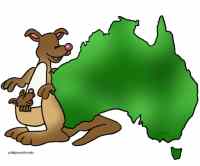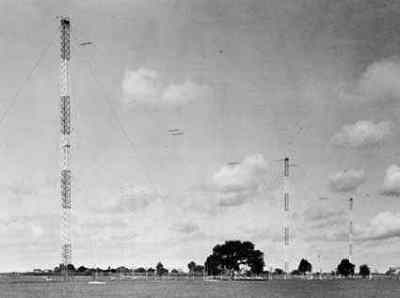
Note!
This is a multipage site, optimised for Firefox and Safari! Click images for full-size views, which will be displayed at the bottom of this page. Feedback and comments from readers would be appreciated, using the Comments Box below, or the author's Email link.
All content in this Project is Copyright
Scope
This is an Engineering Research Paper, which examines the evolution and development of the Shepparton (Victoria) Transmitting Station used for Radio Australia brodcasting.
Author is Bob Padula,OAM, of Melbourne, Victoria, Australia, a Chartered Professional Engineer, providing specialized engineering consulting services to the broadcasting industry
For many years, he worked closely with Radio Australia, when it was managed by the Australian Post Office.
Many of the images are sourced to printed publications of the Australian Post Office, unavailable on the internet.
BeginningsSoon after the onset of the European Conflict in 1939, discussions took place between the imperial leaders in London and the government leaders in Canada and Australia.
These discussions focused on the setting up of large international shortwave stations for use as a possible backup for the BBC Empire Service in England.
Work moved ahead in both countries, and two large shortwave bases were established; Sackville in Canada for Radio Canada International and Shepparton in Australia for "Australia Calling".
Site surveys for the Australian shortwave station were conducted in many areas of south eastern Australia, and finally the decision settled upon a grassland location of 200 hectares in the fertile fruit-growing Goulburn valley of central Victoria. This site was reasonably accessible to the three major cities, Canberra, Sydney & Melbourne, and it was suitable propagationally for a large shortwave station.
February 1943
The main transmitter hall was completed in February 1943, and even though it was designed to contain three transmitters, yet none could be found. Finally, an agreement was reached with the United States, and a 50 kW RCA transmitter, originally allocated to the "Voice of America", was diverted for installation at Shepparton.
The agreement between the American and Australian governments included a proviso that this lendlease transmitter should also carry a relay of programming from the "Voice of America". Thus it was, that the 90 minute daily program, the "Philippine Hour", was heard on relay from "Australia Calling" in Australia for a year or two.
May 1 1944
This new lendlease transmitter from the United States was installed at Shepparton and it was inaugurated, with programming co-ordinated in the ABC studios in Melbourne and fed by landline to the shortwave transmitter at Shepparton, a distance of 180 km.
Two additional transmitters at 100 kW were manufactured in Sydney as a joint effort between AWA and STC and these were installed at Shepparton under the callsigns VLA and VLB. A total of 19 antennas were erected at Shepparton, mostly curtains with passive reflectors.
August 15 1945
Transmitter VLA was inaugurated, and just four days later, VLB was inaugurated. All three of these transmitters incorporated two channels of programming access.
In preparation for the 1956 Olympic Games in Melboune, two new transmitters were installed at Shepparton. Another American made RCA unit at 50 kW was designated as VLD, and an Australian made STC unit at 10 kW was designated as VLY.
Soon afterwards, during a modernisation program, one of the channels in each of the three transmitters at Shepparton was split off and incorporated into a new transmitter. The newly derived transmitters were activated with the callsigns VLC, VLE, and VLF. However, the callsigns in use at Shepparton became so complicated that they were abandoned at the end of October 1961.
Facilities in 2012
There are seven transmitters of 100 kW carrying exclusively the international programming of Radio Australia. There are 13 antennas, supported by masts 70 metres tall. The site is owned and operated by Broadcast Australia, employing seven full time staff.
Note
This article is a condensed version of a longer story in the author's on-line research project "The History of Shortwave Radio in Australia"
Below are links to YouTube videos showing maintenance activity at the station in 2010 and 2011.
Readers are invited to visit
(click the link), and subscribe to the author's AUSTRALIAN SHORTWAVE RADIO DIARY This is an on-line free journal, where topical information, spectrum research, monitoring notes, articles and news about world high frequency broadcasting is published frequently.

Create Your Badge








